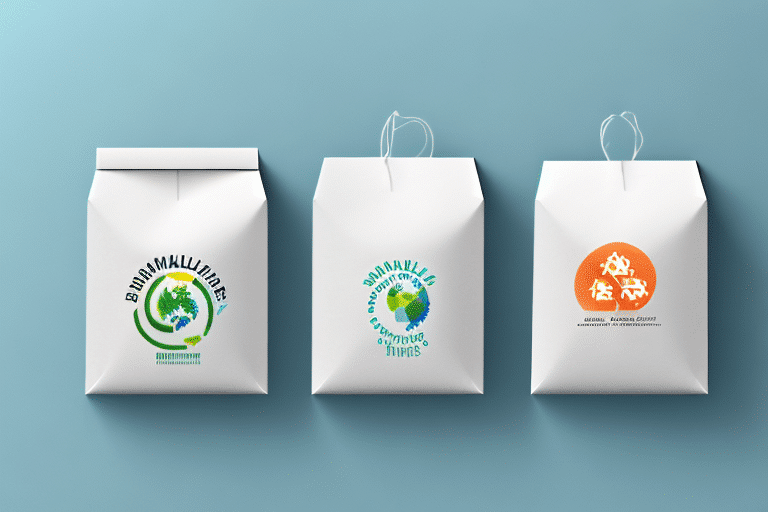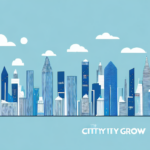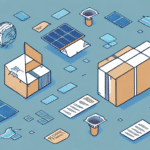The Benefits of Eco-Friendly Packaging
In recent years, the importance of sustainability has gained significant attention, leading to a surge in the popularity of eco-friendly packaging. Adopting sustainable packaging materials offers numerous advantages, including environmental preservation, economic savings, and enhanced social responsibility. This article explores the reasons behind the shift towards sustainable packaging and how it can benefit your business.
Environmental Advantages of Sustainable Packaging
Reducing Carbon Footprint
Eco-friendly packaging plays a crucial role in minimizing a company's carbon footprint. By utilizing renewable resources and biodegradable materials, businesses can significantly lower greenhouse gas emissions associated with traditional packaging production and disposal. According to a 2020 EPA report, sustainable packaging can reduce carbon emissions by up to 30% compared to conventional packaging methods.
Decreasing Waste and Pollution
Traditional packaging materials, especially non-biodegradable plastics, contribute to environmental pollution and landfill waste. Sustainable packaging, made from materials like recycled paper, plant-based plastics, and compostable substances, decomposes more efficiently and reduces the accumulation of waste in ecosystems. The United Nations Environment Programme highlights that effective waste management through sustainable packaging can decrease landfill usage by 25%.
Conserving Natural Resources
Utilizing renewable resources in packaging production helps in conserving finite natural resources. Materials such as bamboo, cornstarch, and mushroom-based packaging are renewable and have a lower environmental impact. This shift not only preserves natural habitats but also promotes biodiversity.
Economic Benefits of Sustainable Packaging
Cost Savings in the Long Run
Although eco-friendly packaging materials might have a higher initial cost, they often lead to substantial savings over time. Reusable and recyclable materials reduce the need for frequent replacements, cutting down on long-term expenses. Additionally, lower transportation costs can be achieved through lightweight sustainable packaging solutions.
Enhancing Brand Image and Customer Loyalty
Consumers are increasingly favoring brands that prioritize sustainability. By adopting eco-friendly packaging, companies can enhance their brand reputation and attract environmentally conscious customers. A Nielsen study found that products with sustainable packaging saw a 5% increase in sales compared to their non-sustainable counterparts.
Regulatory Compliance and Incentives
Governments worldwide are implementing stricter regulations on packaging waste and encouraging sustainable practices through incentives. Complying with these regulations not only avoids potential fines but also qualifies businesses for tax breaks and subsidies that support sustainable initiatives.
Types of Eco-Friendly Packaging Materials
Biodegradable Plastics
Biodegradable plastics are derived from natural materials like corn starch or sugarcane and break down more quickly than traditional plastics. They offer a sustainable alternative that reduces long-term environmental impact.
Recycled and Recyclable Materials
Using recycled materials diminishes the need for virgin resources and reduces waste. Recyclable packaging ensures that materials can be processed and reused, creating a closed-loop system that benefits the environment.
Plant-Based Alternatives
Plant-based packaging materials, such as those made from bamboo or mushroom mycelium, offer renewable and sustainable options. These materials often require fewer resources to produce and have a lower carbon footprint.
Compostable Materials
Compostable packaging breaks down into non-toxic components when composted, enriching the soil and reducing landfill waste. This type of packaging is ideal for products that will be disposed of in composting facilities.
Implementing Sustainable Packaging in Your Business
Assessing Your Packaging Needs
Before transitioning to sustainable packaging, evaluate your current packaging requirements. Consider factors such as durability, cost, and the environmental impact of each material option to determine the best fit for your products.
Collaborating with Suppliers
Work closely with packaging suppliers who specialize in sustainable materials. Building strong partnerships can ensure a steady supply of eco-friendly packaging and provide access to the latest innovations in sustainable design.
Educating Consumers
Inform your customers about the benefits of your sustainable packaging choices. Clear labeling and informative marketing can encourage consumers to support your eco-friendly initiatives and make more informed purchasing decisions.
Marketing Your Commitment to Sustainability
Transparent Communication
Be transparent about your sustainable practices. Providing detailed information about the materials used and the environmental benefits of your packaging builds trust and credibility with consumers.
Leveraging Digital Platforms
Utilize social media and your company website to showcase your commitment to sustainability. Share stories, updates, and milestones related to your eco-friendly packaging efforts to engage a broader audience.
Highlighting Certifications
Obtain and display relevant sustainability certifications, such as the Biodegradable Products Institute (BPI) certification. These endorsements provide third-party validation of your sustainable practices and enhance your brand's reputation.
Future Trends in Sustainable Packaging
Smart Packaging Solutions
Innovations like smart packaging, which incorporates technology for tracking and reducing waste, are on the rise. These solutions not only enhance functionality but also promote sustainability by optimizing resource use.
Advancements in Bioplastics
Bioplastics continue to evolve, offering stronger, more versatile, and more sustainable options for packaging. Ongoing research is focused on improving the durability and biodegradability of these materials to better compete with traditional plastics.
Circular Economy Models
The adoption of circular economy principles, where packaging materials are reused and recycled continuously, is becoming more prevalent. This model reduces waste and ensures that packaging materials remain in circulation for as long as possible.
Conclusion
Eco-friendly packaging presents a multitude of benefits for businesses, the environment, and society at large. By transitioning to sustainable packaging practices, companies can enhance their environmental performance, achieve cost savings, and build a positive brand image. Embracing sustainable packaging is not only a responsible choice but also a strategic advantage in a market increasingly driven by consumer demand for environmentally conscious products. Investing in sustainable packaging solutions positions your business for long-term success and contributes to a healthier, more sustainable planet.




















